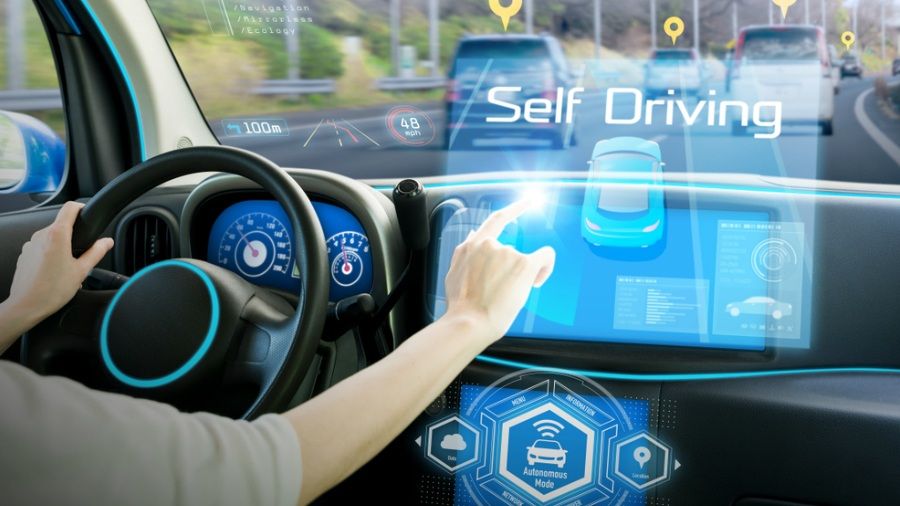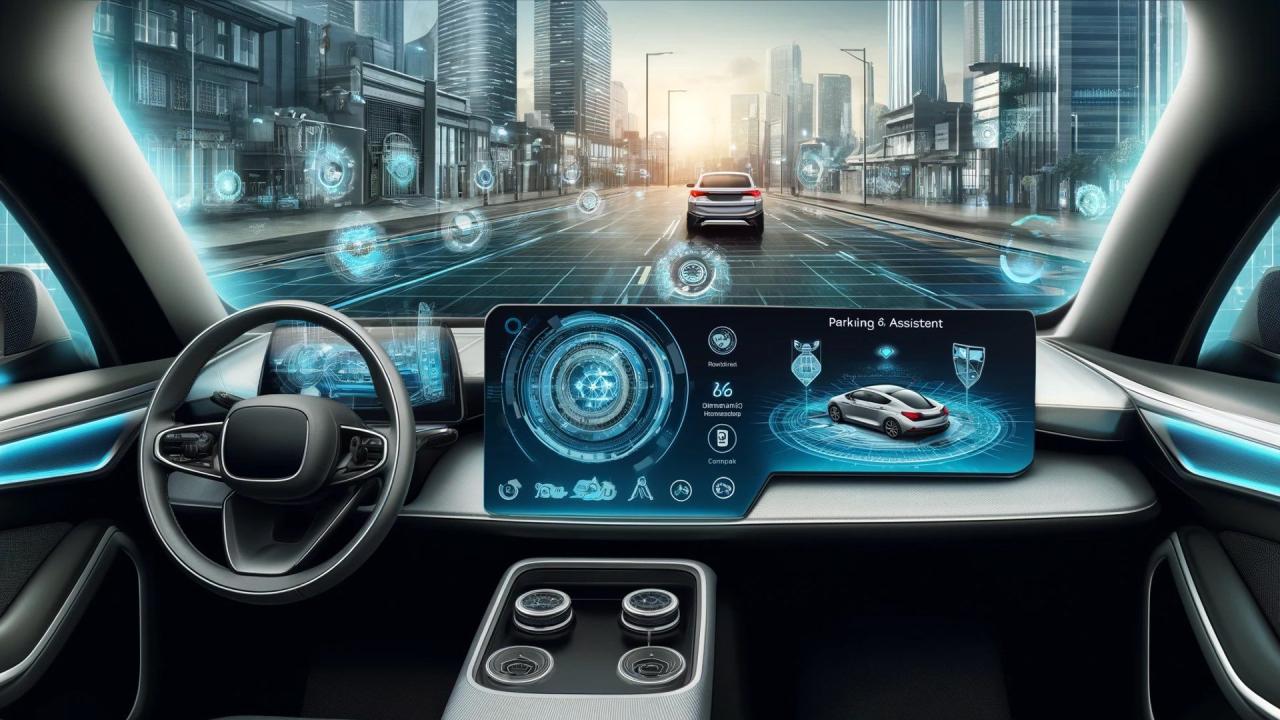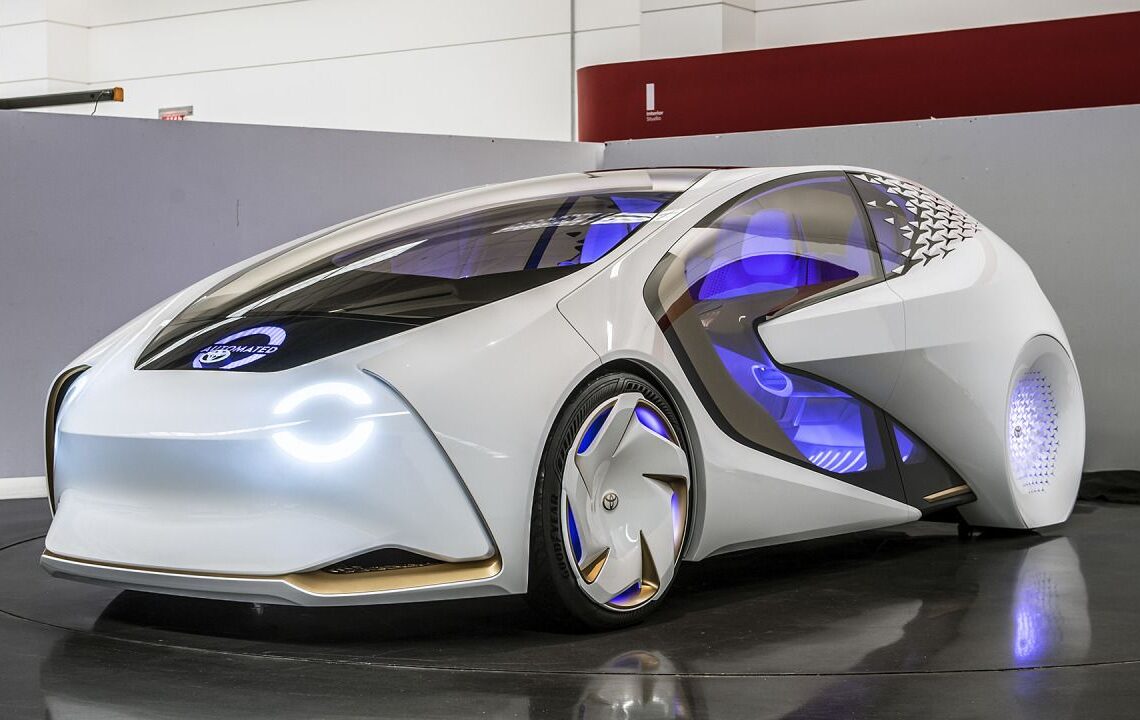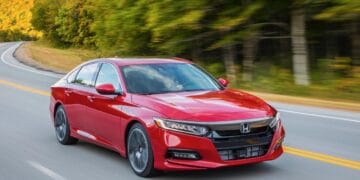The Dawn of Autonomy: Reshaping Transportation and Society
Autonomous Driving Technology (ADT), often referred to simply as self-driving vehicles (SDVs), represents arguably the most profound paradigm shift in transportation since the invention of the automobile itself. Moving beyond driver-assistance features, the goal of ADT is to completely remove the human element from the operational loop, creating vehicles capable of navigating complex, real-world environments safely and efficiently with zero human input.
This transition is not merely a technical upgrade; it’s a societal revolution set to dramatically impact urban planning, energy consumption, logistics, insurance, and the very concept of car ownership.
The promise is immense: significantly reduced traffic accidents (over 90% of which are attributed to human error), optimized traffic flow, reduced commuting stress, and the democratization of mobility for the elderly and disabled. Achieving this vision requires a monumental leap in numerous fields, including artificial intelligence, sensor technology, high-definition mapping, and high-speed communication networks.
This comprehensive exploration delves into the intricate technological pillars supporting this revolution, analyzes the deep-seated challenges still facing mass adoption, and charts the thrilling future trajectory of the truly autonomous world.
I. The Core Pillars of Autonomous Vehicle Technology
An SDV functions by replicating and exceeding human cognitive abilities through a complex interplay of sensors, powerful computers, and sophisticated software. These elements form the fundamental technological stack.
A. Advanced Sensor Fusion
No single sensor can reliably handle all driving conditions (e.g., fog, bright sun, heavy rain). Autonomous systems rely on sensor fusion, combining data from multiple modalities to create a robust, 360-degree, real-time model of the vehicle’s environment.
- A. Lidar (Light Detection and Ranging): Uses pulsed laser light to measure distances, generating highly precise, three-dimensional point clouds of the surroundings. Lidar is crucial for accurate geometric mapping and object localization, especially in varying light conditions.
- B. Radar (Radio Detection and Ranging): Excellent for measuring speed and distance of objects, particularly effective in adverse weather conditions (fog, rain) where optical sensors struggle. It is the primary sensor for adaptive cruise control and forward collision warning systems.
- C. Cameras (Visual and Infrared): Provides rich, high-resolution imagery necessary for detecting traffic lights, signs, lane markings, and distinguishing between object types (e.g., distinguishing a police car from a civilian car). Infrared cameras are used for enhanced night vision and thermal detection.
- D. Ultrasonic Sensors: Short-range sensors used primarily for low-speed maneuvers like parking and detecting curbs or small objects immediately surrounding the vehicle.
B. The Brain: Edge Computing and AI
The sheer volume of data generated by these sensors—often terabytes per hour—requires processing power far exceeding standard consumer electronics. This is handled by specialized, ruggedized computing platforms operating inside the vehicle.
- A. High-Performance Computing Units (GPUs/ASICs): Autonomous vehicles utilize powerful Graphics Processing Units (GPUs) or custom Application-Specific Integrated Circuits (ASICs) designed for massive parallel processing, essential for running complex Deep Neural Networks (DNNs) in real-time.
- B. Perception Systems: DNNs are trained on billions of miles of simulated and real-world data to perform object detection, classification, and tracking—identifying pedestrians, cyclists, road debris, and predicting their future trajectory.
- C. Localization and Mapping: SDVs use High-Definition (HD) maps, which are far more detailed than typical GPS maps, combined with sensor data to precisely locate the vehicle on the road down to centimeter accuracy (Localization).
C. The Nervous System: Redundancy and Safety
True autonomy demands that critical systems never fail. This necessitates deep redundancy.
- A. Redundant Sensor Sets: Multiple sets of key sensors (e.g., two lidars, five radars) are used so that if one fails or is temporarily obscured, the vehicle can continue to operate safely.
- B. Redundant Actuators: Steering and braking systems are designed with mechanical and electrical backups, ensuring that the car can still safely pull over or stop even if the primary control system malfunctions.
- C. Fail-Operational Design: The goal is a fail-operational system, meaning that in the event of a system failure, the car can continue functioning safely (perhaps in a degraded mode) until it reaches a safe minimal risk condition (MRC).
II. Levels of Autonomy: Defining the Roadmap
The Society of Automotive Engineers (SAE) has defined six levels of driving automation, which provide a clear framework for the industry’s progression. Understanding these levels is crucial for grasping the ‘next big jump’ in ADT.
- A. Level 0 (No Automation): The human driver performs all the driving tasks.
- B. Level 1 (Driver Assistance): The system can assist with steering or speed (e.g., cruise control or lane-keeping assist). The driver must monitor the environment fully.
- C. Level 2 (Partial Automation): The system can simultaneously control both steering and speed (e.g., sophisticated adaptive cruise control). The human driver is still responsible for monitoring the environment and responding to system requests for takeover. This is the common current industry high-water mark.
- D. Level 3 (Conditional Automation): The system performs all dynamic driving tasks, but only under certain conditions (e.g., highway driving). The driver does not need to monitor the environment constantly but must be ready to take over upon request. This transition of responsibility is a major technical and legal hurdle.
- E. Level 4 (High Automation): The system performs all driving tasks under specific operational design domains (ODDs)—e.g., within a geofenced area, during good weather, or on specific roads. If the system encounters a situation outside its ODD, it safely pulls over. No human takeover is required. This is the next big jump.
- F. Level 5 (Full Automation): The system performs all driving tasks under all road and environmental conditions a human can manage. No steering wheel or pedals are required.
 III. The Major Hurdles to Achieving Level 4 and Beyond
III. The Major Hurdles to Achieving Level 4 and Beyond
The leap from Level 2 (assistance) to Level 4 (full autonomy in a domain) is vast, moving the legal and ethical responsibility from the human to the machine. Several significant challenges must be solved to realize this goal.
A. The Edge Case Problem (The Long Tail of Risk)
Autonomous systems perform exceptionally well in common, structured driving scenarios. The difficulty lies in the “edge cases”—the rare, unexpected, and often bizarre events that challenge the perception system.
- A. Unforeseen Road Debris: Identifying an unexpected item, like a mattress or a piece of furniture, and executing a safe avoidance maneuver.
- B. Complex Construction Zones: Navigating dynamically shifting lane closures, temporary signage, and human flaggers in ways not easily predicted by mapping data.
- C. Adverse Weather and Sensor Degradation: Heavy snow, thick fog, or rain can degrade the performance of Lidar and Camera systems, requiring the AI to maintain safety using minimal data or safely execute a pulled-over state.
- D. Human Indeterminacy: Dealing with erratic human drivers, pedestrians who jaywalk, or cyclists weaving unpredictably—scenarios requiring instantaneous, non-textbook defensive driving decisions.
B. Regulatory Framework and Standardization
Governments worldwide are grappling with creating consistent rules for testing, deployment, and liability.
- A. Lack of Uniform Testing Standards: Different regions (EU, US states, China) have varied regulations regarding the type of testing data required, which hinders global deployment and certification.
- B. Liability and Insurance: Determining legal liability in an accident where no human was driving is a massive insurance challenge. Is the fault with the manufacturer, the software provider, the sensor company, or the owner? New legal models are required.
- C. Cybersecurity: As SDVs become sophisticated computers on wheels, they become prime targets for malicious hacking. Protecting the vehicle’s command and control systems from remote compromise is a mission-critical cybersecurity challenge.
C. Public Acceptance and Ethical Dilemmas
Societal trust in the technology remains a barrier, often amplified by media coverage of accidents.
- A. The Trolley Problem: This classic ethical thought experiment manifests in programming: In an unavoidable accident scenario, how should the car’s AI prioritize life? Protecting the passenger, an innocent pedestrian, or another driver? Transparency in these ethical algorithms is a mandatory prerequisite for public trust.
- B. Data Privacy Concerns: SDVs collect vast amounts of location and driving data. Regulations must clearly define who owns this data and how it is protected from misuse by manufacturers or third parties.
IV. Transformative Economic and Societal Impacts
Beyond the vehicle itself, the deployment of Level 4 and Level 5 autonomy promises radical transformations across multiple sectors, positioning ADT as a major economic disruptor.
A. Revolutionizing the Logistics and Trucking Industries
Commercial deployment, particularly in trucking and “middle-mile” logistics, is expected to lead the charge due to clear economic incentives.
- A. Reduced Operating Costs: Removing the driver eliminates the single largest OpEx (Operational Expense) item in trucking.
- B. 24/7 Operation: Autonomous trucks do not require mandated rest stops, allowing for true 24/7 movement, dramatically shortening long-haul delivery times.
- C. Improved Fuel Efficiency: AI drivers are trained to maintain optimal speed and acceleration profiles, reducing harsh braking and unnecessary idling, leading to significant fuel savings and reduced emissions.
B. The Rise of Transportation-as-a-Service (TaaS)
Widespread autonomy will make private vehicle ownership less appealing in dense urban centers.
- A. Optimized Ride-Sharing: Fully autonomous fleets (robotaxis) can operate at a significantly lower cost per mile than human-driven services, making TaaS the cheaper, more convenient alternative to owning a car.
- B. Reduction in Parking Infrastructure: With TaaS, vehicles spend less time parked, leading to a massive decrease in the need for urban parking garages and lots, freeing up valuable real estate for housing or parks.
- C. Improved Last-Mile Delivery: Small autonomous delivery bots and vans will handle final-mile goods delivery, drastically cutting down on courier costs and urban congestion.
C. The Impact on Urban Planning and Real Estate
Cities designed around human-driven cars will be radically redesigned.
- A. Reduced Commute Times: AI optimization of traffic flow, V2X communication, and reduced accidents will cut aggregate commute times, expanding the viable commuter range for city workers.
- B. Reclaimed Road Space: The safety and precision of SDVs allow for tighter lane packing and smaller safety margins, potentially allowing roads to handle more vehicles or allowing lanes to be repurposed for cycling or pedestrian use.
 V. The Path Forward: V2X, Digital Twins, and Simulation
V. The Path Forward: V2X, Digital Twins, and Simulation
The ultimate realization of Level 5 autonomy requires not just a better car, but a fully intelligent driving ecosystem.
A. Vehicle-to-Everything (V2X) Communication
V2X technology allows vehicles to communicate with each other (V2V), with infrastructure (V2I), with the network (V2N), and with pedestrians (V2P). This shared awareness is the final ingredient for collision-free driving.
- A. Intersection Synchronization: Traffic lights (V2I) can communicate their schedule to approaching cars, allowing the vehicle to adjust its speed to hit a ‘green wave,’ saving fuel and minimizing stops.
- B. Hazard Warnings: A car that encounters an accident, a sudden road closure, or black ice can instantly broadcast this information to all vehicles (V2V) miles behind it, providing near-instantaneous, collective awareness.
- C. Cooperative Maneuvering: Vehicles can communicate their intentions—such as a lane change or a turn—to others, allowing for cooperative, smoother traffic flow than is possible with human signaling.
B. Hyper-Realistic Simulation and Digital Twins
Testing millions of edge cases in the real world is too slow and dangerous. The industry relies heavily on vast, hyper-accurate digital representations of the world.
- A. Accelerated Testing: Simulation allows companies to run thousands of virtual scenarios in parallel, accelerating testing from real-world weeks to minutes.
- B. Digital Twins of Cities: Creating a “Digital Twin” of a city allows developers to test how an autonomous fleet would interact with real-world infrastructure and traffic patterns before a single vehicle is deployed.
- C. Scenario Generation: AI is used to automatically generate new, difficult, and unique edge cases for testing, constantly challenging and improving the robustness of the perception and planning algorithms.
Conclusion
Autonomous driving technology represents a monumental convergence of artificial intelligence, high-performance computing, and advanced sensing, pushing the boundaries of what is technically feasible. The next big leap—the transition to SAE Level 4 automation—will fundamentally redefine our roads, our cities, and our personal time, shifting the focus from the human task of driving to the AI’s mastery of the environment.
While significant challenges remain in solving the edge case problem, establishing liability frameworks, and earning public trust, the economic, safety, and societal benefits are too compelling to ignore. The continuous advancement in sensor fusion, the deployment of V2X communication, and the relentless training of deep neural networks in simulation demonstrate that the industry is firmly on the path to this fully automated future. The era of the self-driving vehicle is not a distant concept; it is the immediate, disruptive, and next great technological leap already taking shape on our highways and in our urban centers.














